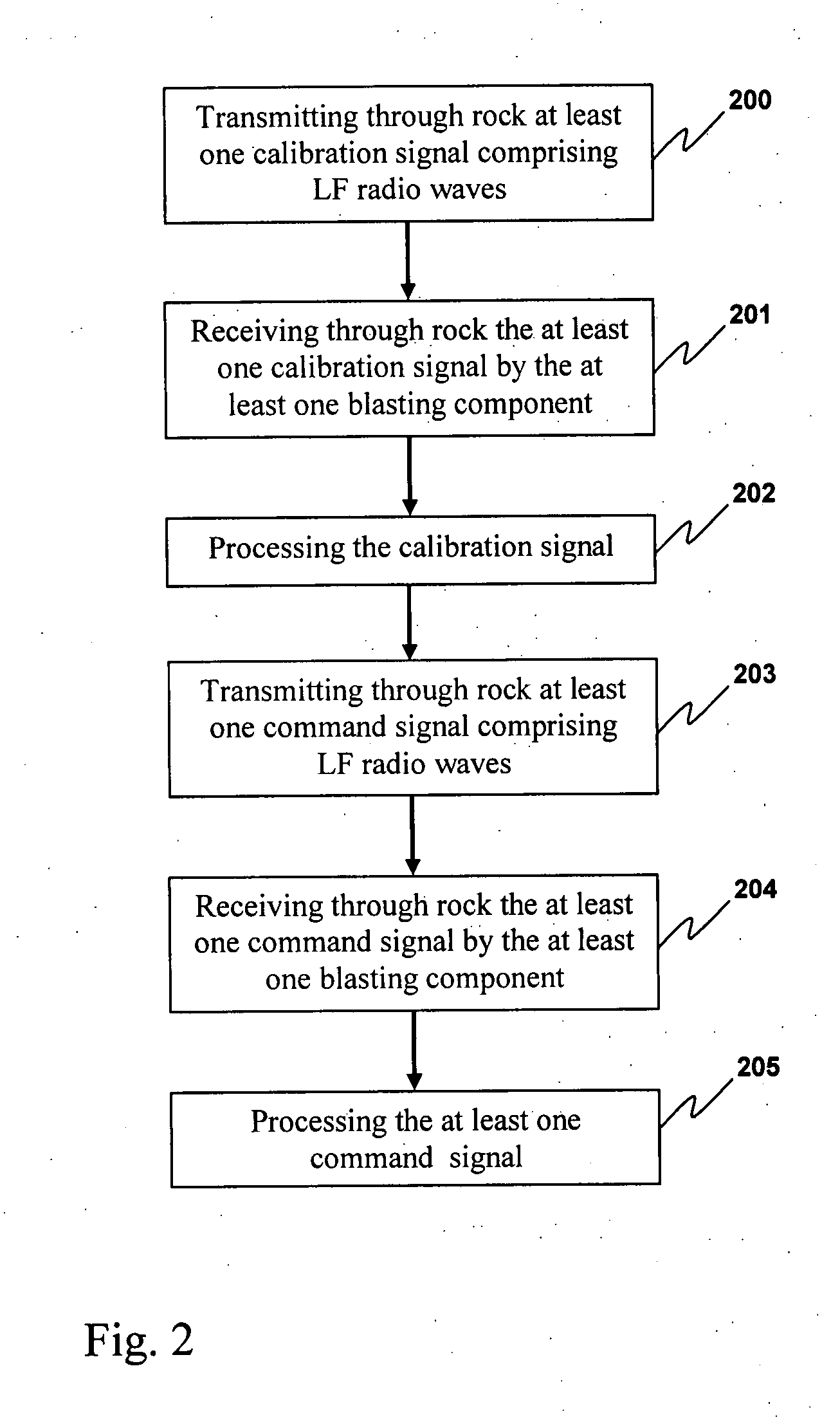Methods of controlling components of blasting apparatuses, blasting apparatuses, and components thereof
a technology of blasting apparatus and control device, which is applied in the direction of lighting and heating apparatus, electric fuzes, instruments, etc., can solve the problems of increased safety concerns, loss of communication between blasting machine and detonator, and labour intensive process
- Summary
- Abstract
- Description
- Claims
- Application Information
AI Technical Summary
Benefits of technology
Problems solved by technology
Method used
Image
Examples
example 1
Method for Communication Between Components of a Blasting Apparatus
[0108]A preferred method of the invention will be described with reference to FIG. 1. In this method there is provided a method of communicating at least one wireless command signal from at least one blasting machine to at least one blasting component comprising or in operative association with an explosive charge. Step 100 involves the transmitting of at least one wireless command signal from the at least one blasting machine to the at least one blasting component using low frequency radio waves. In step 101 there is included the step of receiving the at least one wireless command signal by the at least one blasting component, and in step 102 each blasting component processing the received at least one wireless command signal and optionally acting upon the instructions provided in the at least one wireless command signal as required.
example 2
Method Involving a Calibration Signal
[0109]A preferred method of the invention will be described with reference to FIG. 2. In this method there is provided a method for blasting rock using a blasting apparatus comprising at least one blasting machine on or above a surface of the ground, for transmitting at least one wireless command signal, and at least one blasting component located below a surface of the ground for receiving and acting upon the at least one wireless command signal as required, each blasting component including or in operative association with an explosive charge and comprising a clock and a memory for storing a programmed delay time. Step 200 involves transmitting through rock from each blasting machine or another component of the blasting apparatus a calibration signal having a LF radio wave carrier frequency of from 20-2500 Hz. Step 201 involves receiving though rock the calibration signal by each blasting component. Step 202 involves processing the received cal...
example 3
Binary Coding of a Calibration Signal
[0110]As previously discussed, calibration signals for clock synchronization may be useful if time spacings between, for example, zero-crossings are appropriately calculated. Preferably, the frequency of the signal will remain relatively constant so that the amount of “jitter” in the signal oscillations is reduced, and the blasting component can detect a fairly regular time spacing between zero-crossings. By averaging the time spacings, any jitter in the signal may be compensated for.
[0111]With reference to FIG. 3, there is shown a graph of times between successive zero-crossings received by a blasting component in a test blasting system. It will be noted that for the first 35 zero-crossings detected, a time spacing of an average 48 microseconds is detected. The Figure also shows some experimentation with FSK modulation to generate a binary code for signal transmission as part of the calibration signal. For counts 38 to 43, 48 to 53, 58 to 63, an...
PUM
 Login to View More
Login to View More Abstract
Description
Claims
Application Information
 Login to View More
Login to View More - R&D
- Intellectual Property
- Life Sciences
- Materials
- Tech Scout
- Unparalleled Data Quality
- Higher Quality Content
- 60% Fewer Hallucinations
Browse by: Latest US Patents, China's latest patents, Technical Efficacy Thesaurus, Application Domain, Technology Topic, Popular Technical Reports.
© 2025 PatSnap. All rights reserved.Legal|Privacy policy|Modern Slavery Act Transparency Statement|Sitemap|About US| Contact US: help@patsnap.com



